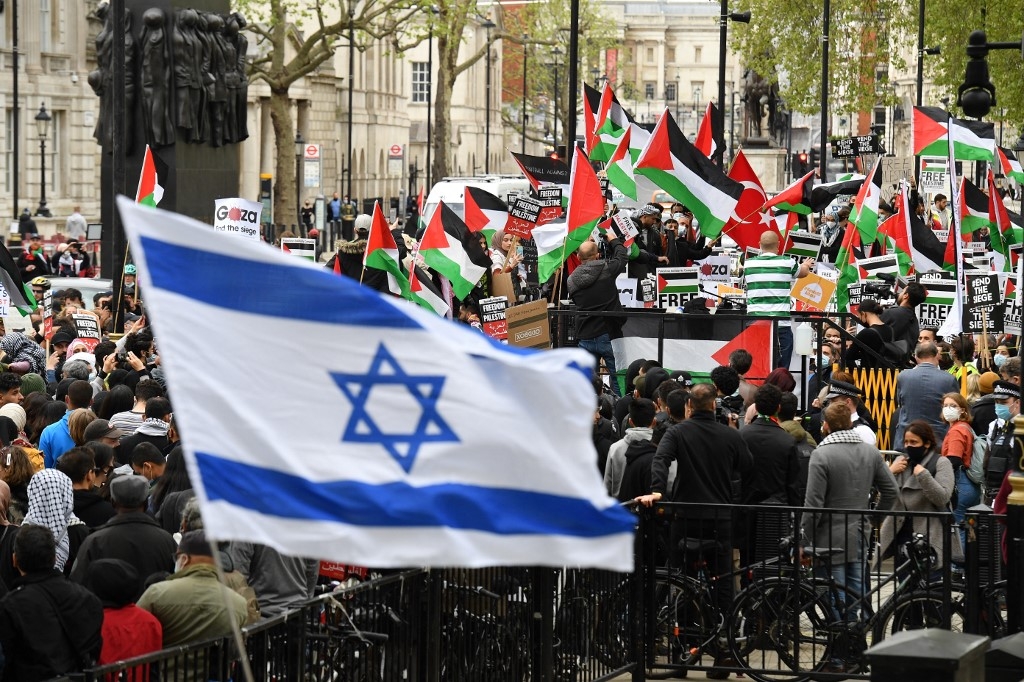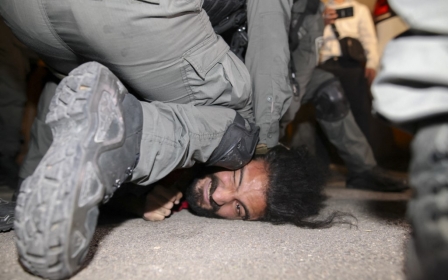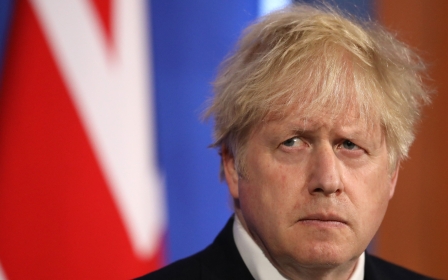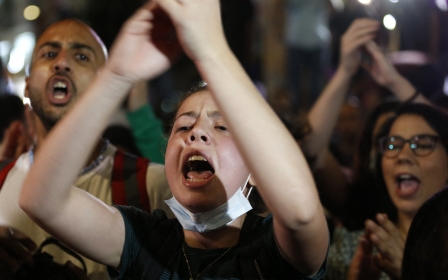Al-Aqsa attacks: How the media gives Israel a free pass

As Palestinians are forced out of their homes, attacked at their holy sites and made to watch as their children are once again massacred by those who have stolen and occupied their lands, the western media is engaging in another bout of equalising the unequal.
The media’s language around this latest use of force by Israel in its forever war against Palestinians takes a familiar pattern, adding to a dictionary of distortion. The word “Palestine” has long since fallen out of use, while occupiers and religious zealots are marketed as “settlers” engaged in the act of “bringing to life” parched and empty land.
Language has become as effective a tool as land grabs and military force in erasing the aspirations and legitimate national identity of Palestinians
Now, as they forcibly expel Palestinian families with the help of state forces, it is being packaged as a real-estate or legal dispute. As the Israeli propaganda machine gives birth to these new terms, their adoption by the international media allows for the omission of other inconvenient facts, such as the expulsion of Sheikh Jarrah residents being predicated on a law of Jewish supremacy.
As lies perpetuate lies and “legal disputes” neatly mask a campaign of systematic displacement and ethnic cleansing of Palestine, any reaction to this injustice must also be distorted.
That means using the word “clashes” to describe heavily armed police who resemble a state militia storming a sacred place of worship and attacking worshippers in the midst of their prayers on one of the most important nights in their religious calendar. The scenes inside al-Aqsa Mosque were ones of chaos, as smoke from tear-gas canisters, grenades and bullets shot by Israeli police injured hundreds of worshippers.
New MEE newsletter: Jerusalem Dispatch
Sign up to get the latest insights and analysis on Israel-Palestine, alongside Turkey Unpacked and other MEE newsletters
Guessing game
To compound the indignities faced by Palestinians, headline writers won’t distinguish between those who attack and those who are under attack. An AFP headline stated: “Hundreds wounded in new Jerusalem clashes: emergency services.” These hundreds were exclusively Palestinian, and yet an “impartial” international news wire could not - or did not want to - present this fact, leaving the reader to play a guessing game.
Research has shown that eight out of 10 people only read the headline of an article, which in the example above, gives a free pass to those who caused the wounding. News wires play an integral role in framing conflicts, given that they are supposed to provide bare-bones reporting that is then picked up and editorialised by major publishers. They have an extra responsibility not only to report accurately, but also to make clear the sequence of events, perpetrators and victims.
As Israel now targets Gaza and is already racking up a new death toll that includes children, the syntax of headlines and coverage is following what has come before. It is the now-predictable Gaza loop: Israel is attacked by rockets, its citizens run to shelters, Israel has a right to defend itself, and Gaza militants have caused the deaths of Palestinians murdered by Israeli bombs. Palestinians, as a rule, are not allowed the right to self-defence.
My analysis for the Centre for Media Monitoring on reporting the plight of Palestinians in Gaza during 2018-19 found 182 occasions where the chief reason behind conditions faced by its residents was omitted. The AFP, Reuters and AP wire services accounted for 143 of these articles.
While in most cases space, or a lack thereof, could excuse the omission of the conflict’s larger context, most articles failed to even mention the Israeli and Egyptian blockades of Gaza, which have turned the territory into an “open-air prison”.
Life of its own
The Israeli-led blockade, which is the cause of the territory’s economic deprivation and widespread malnutrition of residents, has fuelled protests by besieged Palestinians. As a result of these protests in 2018 alone, Israeli forces killed more than 250 Palestinians and wounded more than 25,000 others, including many life-changing injuries.
Yet, Israeli aggression was mostly reported as a response to Palestinian violence or impending violence. In 21 separate headlines on wire-agency stories where Israeli soldiers had shot and killed Palestinian protesters, the role of the offensive actor (Israel) was diminished or omitted.

Some examples include a Palestinian teen who was “killed in clashes”, a Palestinian who “dies from wounds in border unrest”, and an “exchange of fire on Gaza border” that kills a Palestinian. Reprisals by Palestinians are more emphatically described, where the Palestinian actor “stabs” and “kills”; the knife doesn’t take on a life of its own, like “Israeli gunfire”.
Israeli crimes are constantly underplayed. In one example, an article about Israeli soldiers killing a 13-year-old Palestinian on the sidelines of a protest against further Israeli appropriation of Palestinian lands described the event as “clashes”, and the headline focused on Palestinians breaking a Covid-19 curfew to attend the funeral.
Language has become as effective a tool as land grabs and military force in erasing the aspirations and legitimate national identity of Palestinians. And this is by no means a recent phenomena; during a 1984 terrorism conference in Washington, US neoconservatives and the Israeli far right affixed modern terrorism to Islamic and Arab radicalism.
Led by the chief ideologue behind the Iraq invasion, Bernard Lewis, whose beliefs included Arabs needing to be hit “between the eyes with a big stick”, the national struggle of Palestine would be metamorphosed into a fight against Islam and terrorism on the presupposition that “Islam is a political religion”.
Killing with impunity
This, then, became a war of light and darkness, and any Palestinian acts of resistance - from sit-ins, to protests, to property disputes, to border marches - were now classified as terrorism. And however absurd this suggestion might seem, the false equivalence that labels attacks by Israelis as “clashes” gives its spokespeople the chance to trot out this now-predictable polemic without challenge.
The result is that Israel can kill with impunity. As the neoconservative worldview has increasingly shaped the trajectory of conflicts on the international stage, the media has followed its lead, excusing and at times promoting the invasion and occupation of Muslim countries under the pretexts of fighting terrorism, nonexistent weapons and women’s rights.
The latest bout of reporting on Israel/Palestine does little more than aid the oppressor while Palestinians are maimed and murdered
The war on Palestinians has followed the same path. Three weeks ago, as Israel banned Palestinians from gathering at their usual spot in the evenings outside Damascus Gate, the buzzword for headline writers became “Ramadan”.
A Reuters headline gave prominence to “Ramadan nights”, while the exchange of rocket fire between Gaza and Israel was labelled as “Ramadan violence”. Ramadan here is not just a mere factual detail: American and European far-right figures have for years aimed to link Ramadan with terror and violence, with the Daily Mail going so far as to allow far-right commentator Katie Hopkins to publish an entire article about the “season of bombers”.
The emphasis on Muslim and Islamic vernacular alongside mentions of violence is now routine practice among headline writers, and it is not limited to coverage of the Israeli occupation of Palestine. A headline about the 2019 Christchurch attack on Muslims by a white supremacist terrorist called him the “mosque killer”. In the Sun, an attack by a white supremacist in southern England was headlined: “Muslims stab bid”.
The latest bout of reporting on Israel-Palestine does little more than aid the oppressor while Palestinians are maimed and murdered. Even the blatant desecration of a mosque isn’t enough to shift headline writers from their preferred framing.
The words “clashes” and “scuffles” are an injustice to those attacked by a heavily armed, technologically advanced force that assists racist mobs in provoking a civilian population before launching attacks on them. In an already unequal conflict, Goliath has helpers.
The views expressed in this article belong to the author and do not necessarily reflect the editorial policy of Middle East Eye.
Middle East Eye delivers independent and unrivalled coverage and analysis of the Middle East, North Africa and beyond. To learn more about republishing this content and the associated fees, please fill out this form. More about MEE can be found here.






